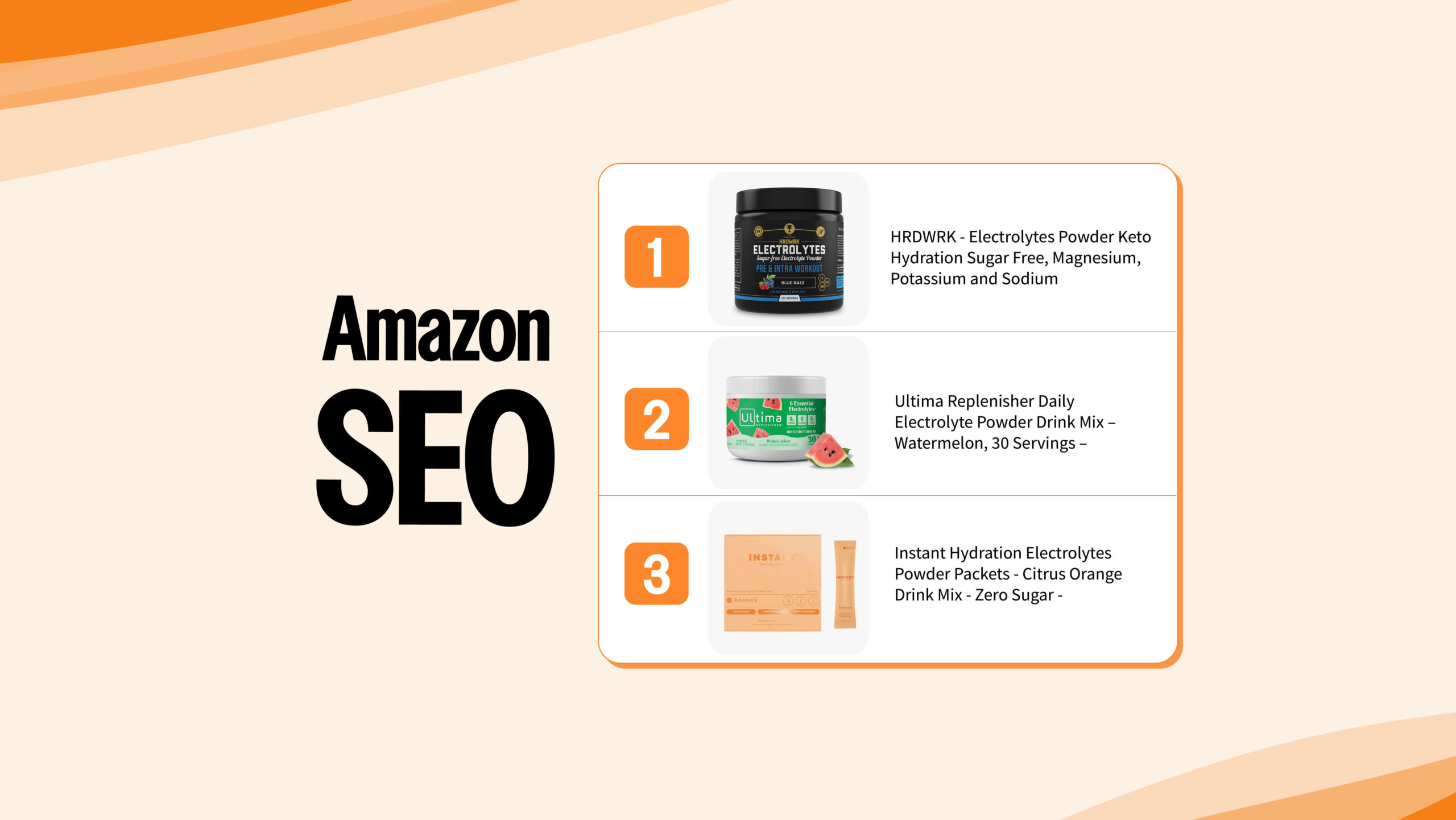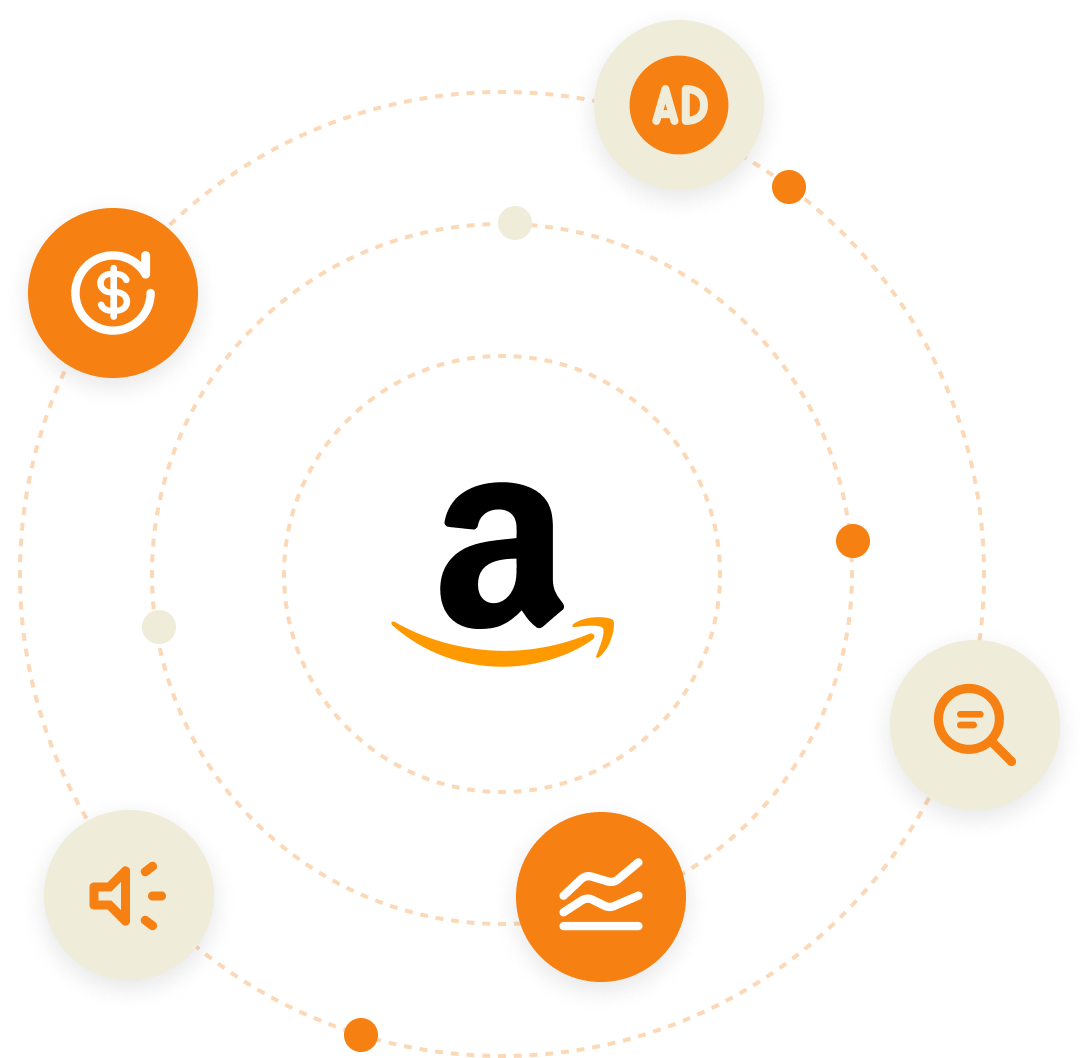A successful Amazon marketing strategy starts with a PPC campaign blueprint. Optimal ad performance is achieved by having well planned, consistent campaign structures and nomenclature and if set up correctly, allows you to execute a more precise approach to optimization and reporting.
Amazon PPC Campaign Setup
Goals of an Amazon pPC Strategy
Generate Sales: Increase ad discovery and visibility boosts sales.
Improve Organic Rank: Driving sales velocity with relevant, top of search keywords.
Generate Data: Discovery of new profitable search terms for launching campaigns and listing optimization.
The Amazon advertising console is arranged according to hierarchical levels. Having a consistent and systematic approach to structuring and naming these levels facilitates effective optimization to save you time and ultimately save on wasted ad spend.

Portfolios
As well as being an effective organizational tool, portfolios are a valuable way to effectively monitor and report product performance. As each parent product is promoted by multiple campaigns, keeping one portfolio per parent product makes workflow easier to manage and provides valuable insight and control over campaigns
Campaigns
Separating both auto and manual campaigns based on match type outputs a higher grade of data and provides better control over campaign performance. With campaign budget distribution up to Amazon’s discretion, we see that those campaigns containing more than one match type have an uneven distribution of budget with some match types receiving more of the budget than others.
Additionally, by separating each match type you are able to monitor and scale more effectively at both the budget and the bid level, as well as simplifying data monitoring and analysis.
Ad Groups
Limiting each campaign to only one ad group allows you to improve both scaling and optimization efficiency as 100% of the budget is focused solely on that ad group. Confining campaigns to one ad group and one match type is the best solution for gaining control over budget distribution and scaling for profitability.
NOTE: test with all campaign and match types to harvest new profitable keywords and increase sales volume.
Keywords
Unequal distribution of sessions and spend can occur when ad groups are subject to keyword dumping as the number of keywords within an ad group dramatically impacts the performance of the campaign. Campaigns achieve optimal output when keywords/product targets are limited to a maximum of 5 per ad group.
For example, an ad group with 15- 20 keywords results in the top 5 generating 80-100% of the sales.
Also, segregating high search volume and low search volume keywords will see that each keyword gets the opportunity to perform. When keywords of varying search volume are grouped together, the spend goes to the higher converting keyword, leaving keywords that could convert, with low or no impressions.
Below is a summary outlining our most successful strategy for Amazon Sponsored Product Advertising.
Step-by-step Guide to Weekly PPC Campaign Optimization
Optimal PPC performance requires frequent and consistent optimization to achieve the best possible return on investment (ROI).
Taking actionable steps on a weekly basis not only ensures your ads are performing at their best but will see that you stay ahead of the competition.
Here is an outline of actionable steps that you can take on a weekly basis to optimize your PPC campaigns and boost your sales, profitably, on Amazon.
Determine your optimization goals
PPC optimization works best in one of two phases, based on what your trying to achieve:
- Optimizing for Performance – aiming to increase sales and improve organic rank
-
- Increase bids and campaign budgets to increase sales velocity and improve organic rank
- Optimize bid by placement for maximum conversions
- Launch new campaigns to increase traffic and visibility
- Optimizing for Profitability – running at a high ACOS/high spend you should focus on reducing waster ad spend and increasing profitability
-
- Decrease bids on non-profitable keywords
- Reduce poor performing bid by placement adjustments
- Eliminate irrelevant or non-profitable search terms
It is not profitable to remain fixed in one phase or the other and it is not effective to run both phases simultaneously. If your brand offers multiple products, each product may be in different phases of its optimization cycle, so analyze and optimize each product individually.

Monitor Your Progress
It is imperative to continually monitor and assess metrics to ensure your optimizations are effective and that your goal will be achieved.
When optimizing for performance:
- Increase in ad spend is proportional to an increase in sessions – If your sessions do not increase you may not be targeting the most relevant keywords.
- PPC sales and total sales – as the gap widens between the two, you can be sure that your organic sales are increasing.
- CTR and your CVR – While they may initially decrease due to the increased traffic, any significant change should be investigated.
When optimizing for profitability:
- PPC Spend – aim is to see it is decreasing with minimal impact to your total sessions.
- Total Sales – should remain steady as an indication that you are maintaining your organic rank
- Profit – as your spend decreases, your profit should increase. After all, that is what this process is all about!
Final Thoughts
Taking a proactive approach to performing regular Amazon account audits will see that you are not spending unnecessarily and you are identifying every opportunity to increase account performance. Selling on Amazon requires constant attention and optimization to continually improve performance with the goal of increasing sales, revenue and profitability.

Mina Elias, “The Egyptian Prescription,” is the CEO of Trivium Group. A chemical engineer turned Amazon seller, he mastered Amazon PPC advertising, investing personally. His insights, shared via YouTube and podcasts, led to Trivium’s global recognition. Today, Mina is a leading figure in the Amazon PPC space.




